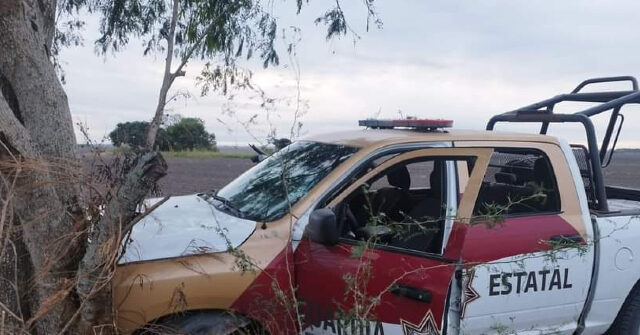The ongoing violence in Mexico, particularly in the states of Tamaulipas and Nuevo Leon, is largely attributed to the Gulf Cartel’s internal conflict, characterized by targeted killings, shootouts, and blockades. Despite the well-documented incidents of violence, local government officials attempt to minimize the situation by claiming it to be a product of mass hysteria rather than acknowledging the severity of cartel activities. On a recent Sunday, the cartel’s operations reached a critical point as gunmen established roadblocks along the highway connecting Reynosa to Monterrey, further highlighting the escalating turmoil in the region.
Witnesses shared alarming videos and images on social media, warning travelers of the dangerous situation, which led to a clash between citizens’ experiences and government denials. Authorities initially refuted reports of blockades until law enforcement was forced to respond after a gunmen ambush on police patrolling the area turned into a significant shootout. This not only demonstrated the cartel’s brazen disregard for law enforcement but also underscored the growing conflict in the state, particularly along the highway linking San Fernando to central Tamaulipas, where gunmen torched trucks to obstruct police reinforcements.
The violence is further exemplified by targeted killings that took place simultaneously in Tamaulipas, spotlighting the cartel’s ruthless efficiency in eliminating perceived threats or rivals. One incident involved an unidentified teenager being shot while riding a motorcycle in Ciudad Victoria, with assailants using automatic weapons to carry out the attack. This lethal act of violence reinforces the fear instilled by cartel gunmen, who operate with significant resources and firepower. Additionally, another execution occurred in Jimenez, where a victim was shot in the head, adding to the growing list of fatalities attributed to cartel activity.
Despite the clear evidence of cartel violence, local government and military forces have struggled to respond effectively, often choosing to deny the reality of ongoing threats to public safety. Their hesitance to confront the issue may stem from a combination of corruption, fear of retaliation, and inadequate resources to combat the heavily armed cartel members. This denialism only exacerbates the situation, leaving the population vulnerable to the whims of organized crime and further eroding public trust in the authorities meant to protect them.
The response from journalists like Ildefonso Ortiz and Brandon Darby—who co-founded the Cartel Chronicles project to shed light on the violence and its implications—helps to counteract the government’s narrative. Their ongoing reporting seeks to bring truth to light and provide a clearer picture of the real dangers faced by citizens living in cartel territory. By disseminating information through various platforms, they aim to inform the public and keep accountability in the conversation surrounding cartel violence in Mexico.
In summary, the situation in Tamaulipas and Nuevo Leon remains dire, with cartels engaging in severe violence while local government officials dismiss the threats. The atrocities committed by these groups, as reported by courageous journalists, challenge the narrative of denial and reveal a pressing need for effective policy responses to restore safety and order. As the cycle of violence continues unchecked, the impact on communities grows increasingly severe, calling into question the capabilities and intentions of state actors in combating organized crime in Mexico.

